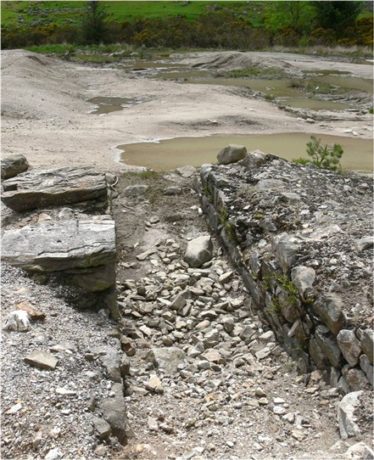Ballinafunshoge - mine site


The extent of the spoil heaps still visible on either side of the road attest to the relatively substantive nature of this mining operation, which occurred nearly continuously from c. 1800 to 1900, at least.
Much of the spoil has weathered and blended into the landscape, particularly on the steep slope on the northeast side of the road. Natural re-vegetation is obvious here, and, in places, in the far more extensive spoil heaps on the southwest side of the road, although seriously damaged and eroded by quad/motor bike scrambling activities (Fig GM3)
Noteworthy historic features, which may still be discerned include:
The run-in adit portal, with active drainage creating an ochre precipitate in the drainage channel either side of the road;
Remains of a c. 1.5m wide x 8m long, masonry construction water wheel pit. The function of the water wheel is unknown, though it might reasonably be surmised to have operated some form of ore crushing machinery.
There are two prominent building ruins opposite the spoil heaps, on the south side of the Avonbeg River. Both buildings are constructed on a substantial masonry base, which forms part of a walled enclosure between them and the river. It is presently unknown if either or both buildings bore any relationship to the mine, though proximity again suggests a possible relationship. Very little now remains visible of the “School House” to the south east of the mine site.




No Comments
Add a comment about this page